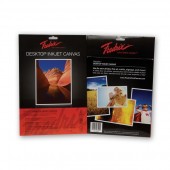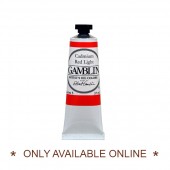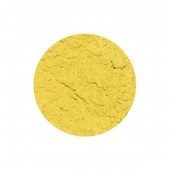Search results for 'de 100 dias de'
-

Cornelissen T73140 Professional Press
£3,800.00Cornelissen Press T73140, Bed size: 73 x 140 cm, Upper Roller Diameter: 157 mm, Lower Roller Diameter: 157mm, Etching press base: 78.5 x 91 cm. Weight: 148 kg. We offer press demonstrations for this model. Please call Cornelissen for more details. This press is made to order. Delivery to your address usually takes up to 4 weeks to UK & EU countries and 6 weeks to USA after the order is placed. Please be aware these goods are heavy and it is the customer’s responsibility to check measurements for delivery before orders are placed and to be able to receive the goods over two days.
Learn More -

Fredrix Inkjet Canvas Pack
Starting at: £16.90
Call to Order
340GSM, A4, 10 Sheets, Poly-Cotton Blend. Learn More -

Gamblin Oil Colours 37ml
Starting at: £11.20
*Only available online*. Robert Gamblin started making artists' oil paints in 1980. Since then he has built a reputation as both an innovative and imaginative maker of some of the best oils on the market today. As well as usual single pigment colours you would expect, the range also includes an interesting selection of neutral greys, beautiful metallics and the truly innovative Radiant range of pastel colours. Combining science and artistry, Gamblin paints are truly exceptional. *Please note, this range is stored offsite. Please allow extra time for your order to be processed and dispatched. Learn More -

Somerset Enhanced Inkjet Paper
Starting at: £52.80
225GSM, A4 / A3+, Satin / Velvet / Textured Surface, 100% Cotton, pH Neutral, Coated on one side, Radiant White. Learn More -

Gamblin Oil Colours 150ml
Starting at: £27.20
* Only available online.* Robert Gamblin started making artists' oil paints in 1980. Since then he has built a reputation as both an innovative and imaginative maker of some of the best oils on the market today. As well as usual single pigment colours you would expect, the range also includes an interesting selection of neutral greys, beautiful metallics and the truly innovative Radiant range of pastel colours. Combining science and artistry, Gamblin paints are truly exceptional. *Please note, this range is stored offsite. Please allow extra time for your order to be processed and dispatched. Learn More -

Litharge Pigment
Starting at: £8.00
Call to Order
PY46
Litharge is lead monoxide, also known as Massicot. It is an opaque pigment, with a weak tinting strength. Its toxicity and fugitive nature means that it is rarely used as a pigment. Instead, its fast drying time means that it has been used as a siccative in oil mediums. The colour tends to darken in all media, and it is also unstable in its dry form, as the powder can lighten when exposed to air.
Toxicity D Lead is a highly poisonous metal which, if inhaled, ingested, or introduced to the blood through cuts in the skin, builds up in the body and can affect multiple parts of the body, including the digestive and nervous systems.
PERMITTED USES Over 18s only. Proof of age required. Restoration of art works and protected buildings when alternatives unsuitable.
IMPORTANT Please refer to the MSDS (Material Safety Data Sheet) below. Dispose of product as hazardous waste.
SHIPPING Please note, we are not able to send this product outside the UK.
Learn More




